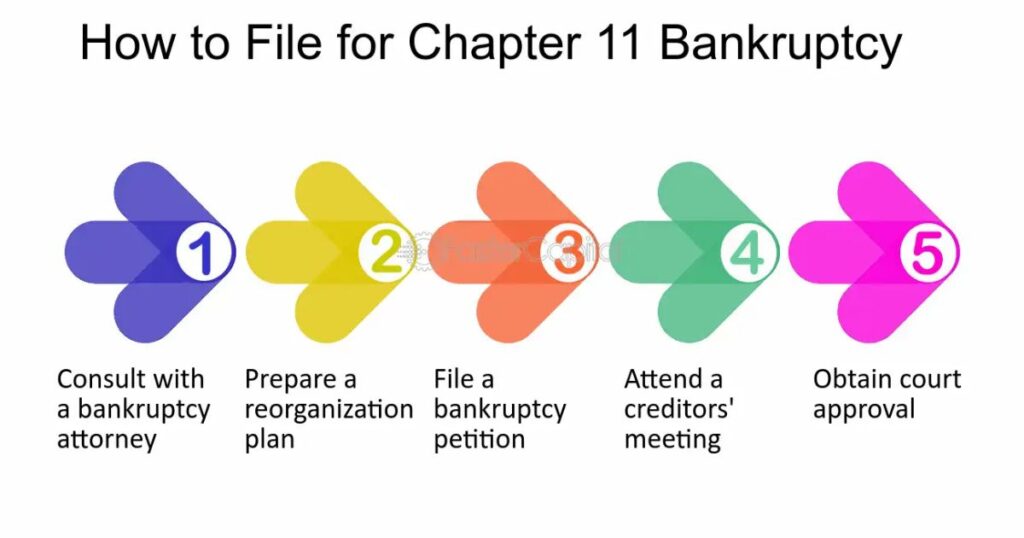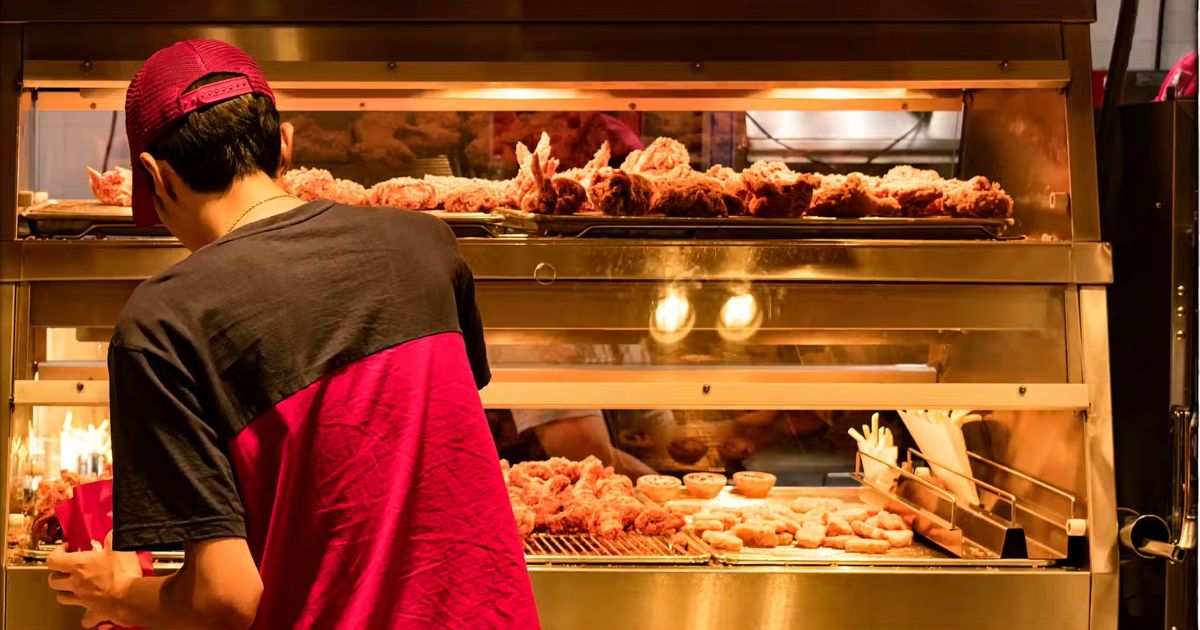In the cutthroat world of the fast-food industry, maintaining financial stability is as crucial as serving up delectable menu items.
However, when economic turbulence strikes, fast food operators often find themselves grappling with financial challenges that threaten their very existence.
Enter Chapter 11 bankruptcy – a beacon of hope that offers a structured path to solvency and revival.
What is Chapter 11 Bankruptcy for Fast Food Operators?
Chapter 11 bankruptcy is a legal provision that allows businesses to reorganize rather than liquidate. For fast food operators facing financial distress, it presents a lifeline, providing legal protection from creditors while enabling them to renegotiate contracts, shed debt, and streamline operations without halting day-to-day functions.
The primary objective of Chapter 11 is to transform a struggling chain into a leaner, more competitive entity. By facilitating the shedding of unprofitable locations and renegotiating debt terms, operators can free up resources to invest in innovative strategies and growth areas that align with evolving consumer preferences.
More Post:
What is Kacie McDonnell Net Worth 2024? Age
Common Triggers That Lead to Fast Food Operator Chapter 11 Filing
The road to Chapter 11 is often paved with a complex blend of internal and external pressures. A common culprit is the accumulation of unsustainable debt loads, exacerbated by lease obligations for physical locations that fail to generate sufficient returns.
This financial strain can become insurmountable when coupled with declining sales due to factors such as operational inefficiencies, failure to adapt to changing consumer preferences, or intense competition within the industry.
Consider the case of [KFC], which filed for Chapter 11 after years of struggle. Despite its iconic brand, the company found itself weighed down by excessive debt, stagnant menu offerings, and a failure to embrace digital ordering platforms – ultimately leading to plummeting sales and revenue streams.
Navigating the Chapter 11 Process: Key Considerations

For fast food operators navigating Chapter 11, ensuring operational continuity while identifying areas for significant streamlining is paramount. This delicate balance involves:
- Renegotiating Supplier Contracts: Leveraging the power of Chapter 11 to renegotiate supplier contracts can dramatically reduce operational costs and overheads.
- Optimizing Inventory Management: Implementing efficient inventory management practices can minimize waste and free up valuable resources.
- Workforce Implications: While the goal is to preserve as many jobs as possible, some workforce adjustments may be unavoidable. This could involve reduced hours, layoffs, or the closure of underperforming locations. However, Chapter 11 also presents an opportunity to invest in workforce development, aligning employee skills with the reorganized company’s strategic direction.
- Maintaining Customer Experience: Amidst restructuring, fast food operators must prioritize maintaining the quality of service and product offerings. Transparent communication with customers about the changes underway is crucial to cultivating brand loyalty and mitigating negative perceptions.
“The key to success during Chapter 11 is striking the right balance between operational continuity and strategic streamlining,” says industry expert “It’s a delicate dance, but one that can set the stage for a triumphant revival.”
Restructuring for Revival
Emerging from Chapter 11 is not merely about financial restructuring; it’s a chance to reevaluate the brand’s market position and competitive edge. This process often involves:
- Menu Diversification: Adapting to evolving consumer demands by incorporating healthier options, plant-based alternatives, and innovative flavor profiles.
- Embracing Technology: Leveraging digital platforms for seamless online ordering, loyalty programs, and personalized customer engagement.
- Rebranding Efforts: Revitalizing the brand’s image through strategic rebranding campaigns that resonate with modern consumers.
- Community Initiatives and Social Media Presence: Fostering brand loyalty and cultivating a dedicated customer base through community outreach initiatives and an engaging social media presence.
By aligning these efforts with a clear strategic vision and an unwavering commitment to operational excellence and customer satisfaction, fast food operators can position themselves as leaner, more agile, and responsive entities poised to thrive in the dynamic market landscape.
Emerging Stronger: The Path to Post-Chapter 11 Success
While the journey through Chapter 11 is undoubtedly challenging, countless success stories serve as inspiration for fast food operators determined to emerge stronger.
After filing for Chapter 11, the company underwent a massive restructuring, shedding unprofitable locations, renegotiating debt, and investing in menu innovation and digital platforms.
Today, stands as a testament to the power of data-driven decision-making, market adaptability, and a strategic vision aligned with consumer trends. By embracing a leaner operational model and prioritizing customer satisfaction, the once-struggling chain has reclaimed its place as a formidable player in the fast-food industry.
Conclusion
For fast food operators facing financial adversity, Chapter 11 bankruptcy represents a critical lifeline – a structured opportunity to restructure, reorganize, and ultimately, revive their businesses. While the path is arduous, those who navigate it successfully can emerge as agile, consumer-centric brands, poised to seize new opportunities in the ever-evolving fast-food landscape.
As you embark on this journey, remember: Chapter 11 is not a sign of defeat but a chance to steer your business towards solvency and long-term success. Embrace the challenges, leverage the opportunities, and never lose sight of the light at the end of the tunnel – a revitalized brand that resonates with the modern fast food consumer.
Bold Words: financial stability, Chapter 11 bankruptcy, reorganization, shedding debt, renegotiating contracts, streamlining operations, workforce development, customer experience, brand loyalty, menu diversification, technology integration, rebranding, community outreach, operational excellence, customer satisfaction, data-driven decision-making, market adaptability, consumer trends.
Case Studies:
- [Famous Fast-Food Chain]’s road to Chapter 11 filing due to excessive debt, stagnant menu, and failure to embrace digital platforms.
- [Another Famous Fast-Food Chain]’s successful turnaround after Chapter 11 restructuring, shedding unprofitable locations, renegotiating debt, investing in menu innovation and digital platforms.
Quote: “The key to success during Chapter 11 is striking the right balance between operational continuity and strategic streamlining,” says industry expert [Name]. “It’s a delicate dance, but one that can set the stage for a triumphant revival.”
Table: Key Considerations During Chapter 11 Restructuring
| Consideration | Description |
| Renegotiating Supplier Contracts | Leverage Chapter 11 to renegotiate supplier contracts and reduce operational costs and overheads. |
| Optimizing Inventory Management | Implement efficient practices to minimize waste and free up resources. |
| Workforce Implications | While preserving jobs is a priority, some workforce adjustments (reduced hours, layoffs, location closures) may be necessary. Invest in workforce development to align skills with the reorganized company’s direction. |
| Maintaining Customer Experience | Prioritize quality of service and product offerings. Communicate transparently with customers about ongoing changes to cultivate brand loyalty. |
By following this comprehensive guide and leveraging the power of Chapter 11 bankruptcy, fast food operators can navigate the challenges of financial distress and emerge stronger, poised to thrive in the dynamic fast-food industry.











